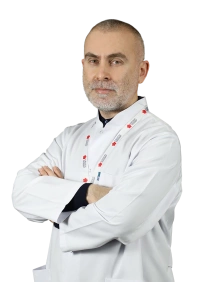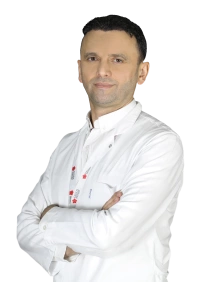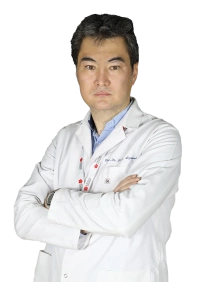Radiology
In our Radiology Department, the diagnosis and treatment are performed for both adults and children. Our aim is to establish the diagnosis of the patients who come to our hospitals with various complaints with the most accurate devices and methods. The current and cutting-edge equipment is used in our hospital. In our Radiology Clinics of our hospitals, all radiological procedures are performed for 7/24.
Diagnostic equipment in imagining center
- 1.5 T Magnetic Resonance
- Multislice (6 and 64 detector) Computed Tomography
- Ultrasonography (US)
- Color Doppler Ultrasonography
- Digital Angiography (DSA)
- Convention
- Hand x-ray
- Mammography
- Multislice computed tomography (Multidedector BT)
Magnetic Resonance Imaging (MRG)
Our high-tech MR devices in our radiology clinics fulfill all kinds of MR imaging needs of our patients and offer a calm environment so as to reduce the stresses of our patients. Philips 1.5 Tesla full body imaging system with the latest hardware and software, which is one of the fastest MR devices on the market today, has been equipped. Three-dimensional images that increase the diagnostic sensitivity and have significant contributions to the planning of treatment can be created. In addition, the latest imaging protocols can also be easily implemented.
All neurological examinations (brain, neck and vertebral column), vascular angiography (peripheral, intracranial, carotid and aorta), abdomen, thorax and cardiac examinations, breast MRI, musculoskeletal system examinations, MR cholangiopancreatography (MRCP) fetal and functional MRI examinations can be performed. Functional MRI techniques, diffusion and perfusion MRI include cerebrospinal fluid flow analysis. Breast MRI can be performed to diagnose the breast cancer in cases where mammography and ultrasound may not be definitively ensure the final diagnosis. MRCP examinations can non-invasively display the biliary and pancreatic ducts and substitute for diagnostic ERCP examinations. In our clinic, the radiological examinations requiring the utilization of anesthesia for all ages can be performed under the supervision of an expert anesthesiologist.
Computerized tomography (MD-CT) scans made with multidirectional detector technology ensure that all organs are scanned in a very short time and with high diagnostic features.
While the full body imaging can be done in only 15-20 seconds with 6 and 64-slice CT devices in our departments, the image richness is also increased with 3D practices. This system, which plays a very important role in the examination of the lung, the parenchymatous organs, the heart and the coronary vessels, ensure the detection of disease findings even in the sizes which are very difficult for human beings to distinguish and the diagnosis of diseases in the early state. With this device, CT angiography examinations for all vessels in the body including coronary arteries virtual, and colonoscopy and virtual bronchoscopy can be performed.
Ultrasonografi (US) ve Doppler Ultrasonografi - Ultrasonography (US) and Doppler Ultrasonography
All ultrasound devices in our hospital are equipped with the latest technological innovations. All ultrasonographic examinations such as abdomen, pelvic, kidney, thyroid, thorax, breast, hip, eye and cranial ultrasonography are performed.
Vascular structures and blood flow can be examined in detail by the color doppler ultrasonography. Upper and lower limb arterial and venous system color doppler ultrasonography, carotid and vertebral artery doppler and scrotal doppler, gynecologic and obstetric doppler, renal artery doppler are among the examinations.
Mammography
Mammography is a special examination performed with X-rays in the diagnosis of breast cancer and other benign breast diseases. Mammography services include screening examinations of asymptomatic patients, sterotaxic preoperative breast marking and consultations.
The technological features of the devices allow optimal magnification and compression techniques with a minimum dose of radiation. In the department that provide accurate and rapid diagnostic services for the mammographic examinations with the purposes of screening and diagnosis, the ultrasonic breast marking, the fine needle aspiration and biopsies are also performed successfully.
64-Slice Computed Tomography Usage in Cardiac Diseases
CT Coronary Angiography; It is an alternative new method for coronary angiography in the diagnosis of coronary artery diseases. New, fast tomography devices such as 64-detector CT can capture the heart rate; cardiac and coronary arteries can be displayed three-dimensionally with genuine anatomical images. CT coronary angiography can be used for the patients with suspected atypical angina, in cases where the catheter coronary angiography is inadequate, in the detection of coronary artery anomalies, in the scanning of coronary artery diseases, in the diagnosis of congenital cardiac diseases and in the follow-up of patients following by-pass and stenting. This procedure which is performed by the injection of stained agent (contrast agent) through a vascular access established with a thin needle in the arm of patient takes about 8-10 seconds, accompanied with the cardiac rhythm and is completed along with all procedures (preparations before and after imagining).
The coronary artery disease is the most common cause of death in the middle and advanced age group in our country and industrialized societies. There are 1.6 million cardiac patients in our country, and it is the gold standard test in the diagnosis of coronary artery diseases for 130.000 people per year. However, the invasive nature of this test has increased the interest in non-invasive methods in the recent years. Today, new and fast tomography devices such as 64-detector CT can capture the heart rate; the cardiac and coronary arteries can be displayed without the usage of three-dimensional catheter with genuine anatomical images.
CT coronary angiography can be used for the patients with suspected atypical angina, in cases where the catheter coronary angiography is inadequate, in the detection of light stenotic or soft plaques, in the detection of coronary artery anomalies, in the scanning of coronary artery diseases, in the follow-up of patients following by-pass and stenting, in the diagnosis of congenital cardiac diseases in the clinical evaluation of myocardial thickness, cardiac cavity and aortic pathologies.
64-detector CT is an examination with high accuracy in the detection of coronary artery diseases (85-90%). Patients with suspected coronary artery disease who are found to have normal vessels by means of 64-detector CT are not required to undergo catheter angiography, which is an invasive procedure and requires hospitalization. In addition, not only coronary arteries, but also other cardiac chambers, other large vessels and lung can be examined by MDCT; and the diagnosis of silent lung cancers is performed in the early stage. With 64-detector CT, all body vessels are evaluated quickly and easily.
Calcium scoring is a screening method for the coronary artery disease. Indication of vessel stiffness (atherosclerosis) is calcium in the coronary arteries. With current rapid MDCT devices, the amount of calcium in coronary artery is calculated numerically (scoring). The risk of coronary artery cases (coronary artery narrowing, heart attack, etc.) that may occur in the future is correlated with the amount of calcium. Thus, the risk group of disease is determined.
Calcium Scoring is a very simple imagining method and there is no need for any pre-preparation procedure. The patient is placed on the CT device and the imagining is completed during a breath holding attitude within approximately for 5-6 sec.




